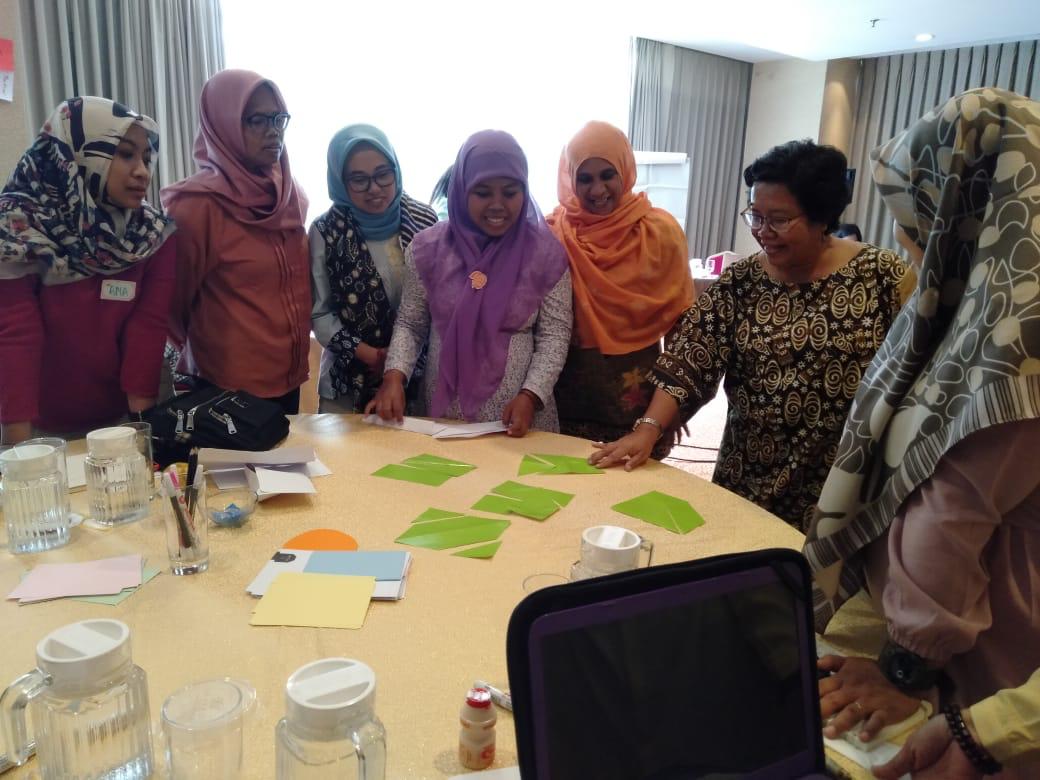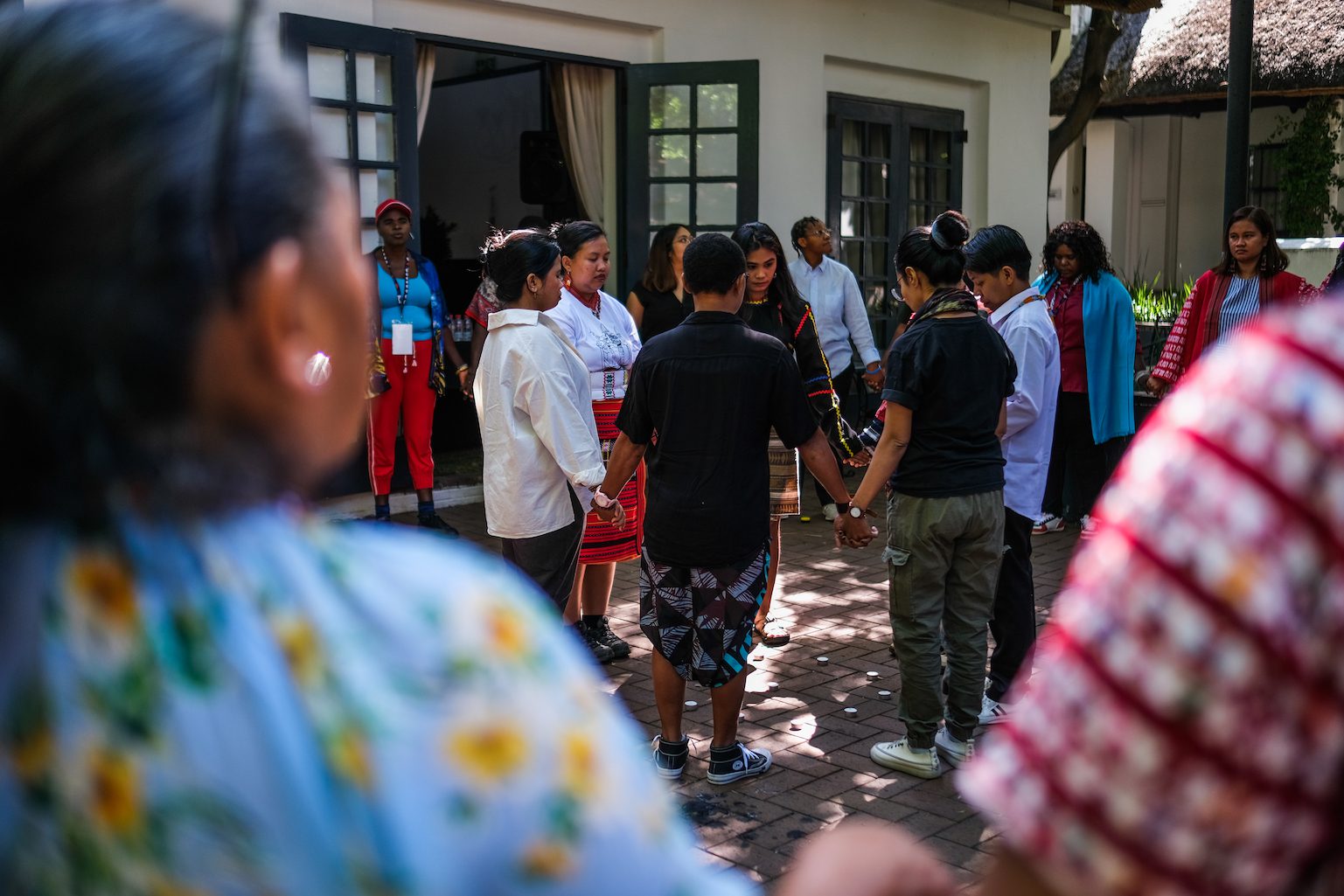



“It has probably become more dangerous to be a woman than a soldier in armed conflict.” – Major-General Patrick Cammaert, former commander of UN peacekeeping forces in the eastern Congo
Jacqueline Nolley Echegaray reflects on the recent International Gender Justice Dialogue
50+ women’s rights advocates, activists and technical experts from 16 countries gathered in Puerto Vallarta, Mexico on April 20 and 21, 2010 to identify new strategies for advancing gender justice through the implementation and use of the Rome Statute and the International Criminal Court (ICC), and for engaging with other international justice institutions such as regional human rights courts and commissions and the United Nations Security Council.
On the first day, women advocating for peace and human rights in some of the most difficult contexts imaginable—in Iraq, Burma, Colombia and Israel, to name a few—discussed their work, as did experts on international human rights mechanisms such as the ICC and international criminal tribunals. On the morning of the second day, Susannah Sirkin, Deputy Director of Boston-based NGO Physicians for Human Rights, sounded the call for a global campaign to stop rape in war. Sirkin’s remarks conceptualized rape as a weapon of war, and invoked the achievements of the International Campaign to Ban Landmines as inspiration for taking on the seemingly impossible task of making significant inroads—and even banning outright—the use of rape as a weapon.
When the International Campaign to Ban Landmines (ICBL) received the Nobel Peace Prize in 1997, it was lauded by the Nobel committee for its success in converting a vision into a feasible reality. Driven by first-hand knowledge of the devastating impact of long-forgotten mines unexpectedly detonating, killing and maiming civilians by the hundreds of thousands, the ICBL pushed forward, insisting on a complete ban of the production, stockpiling and use of anti-personnel mines by states. As a result, and with the support of the Canadian government, among others, the ICBL successfully mobilized a global movement, ultimately resulting in the adoption of the Ottawa Treaty in 1999. Today, the treaty has been ratified by 153 states (and counting), which have collectively destroyed more than 44 million mines, while 86 countries have destroyed their mine stockpiles completely.
Looking back to the campaign’s origins, Sirkin noted:
…Some of us balked because we couldn’t imagine banning this widely used weapon in our lifetime. But here we are.
And we used to say that the landmine was the cheapest and most widely distributed conventional weapon. I’m sad to say that the weapon of war under discussion at this conference is even more widespread, and even cheaper. You could say it’s free, and every male combatant is equipped with it. This is definitely an arms control challenge of serious proportions.
It would in fact be difficult to overstate how serious: according to the UN High Commissioner for Human Rights, local health centers in the Democratic Republic of Congo’s South Kivu province estimate that 40 women are raped in that region every day, as part of that country’s brutal armed conflict. In Liberia, 92% of the 1,600 women interviewed as part of a 2005-2006 government survey reported experiencing sexual violence, including rape. And according to Human Rights Watch, in the Darfur region of Sudan women and girls live under constant threat of rape by government soldiers, members of the government-backed Janjaweed militia, rebels and ex-rebels.
These are but three examples of recent and current conflicts in which rape has been employed as central strategy by armed combatants. According to Major-General Cammaert, (the former UN peacekeeping commander, eastern Congo, quoted above), “It’s a very effective weapon, because the communities are totally destroyed…. [It] punishes the men, and [it] punishes the women….”
What is to be done? Significant progress has been made on the international criminal justice front: sexual violence became a punishable offense under modern international law with the promulgation of the Fourth Geneva Convention in 1949; during the 1990s the International Criminal Tribunals for Rwanda and the former Yugoslavia successfully prosecuted individuals for mass rape; and the 1998 Rome Statute of the International Criminal Court (which came into force in 2002) codified rape and other forms of gender violence as both crimes against humanity and war crimes.
In 2000, the UN Security Council unanimously passed Resolution 1325 on Women, Peace and Security, which emphasizes the need for special measures to protect women and girls from sexual violence during conflict, and in June 2008 the same body unanimously approved Resolution 1820, which describes rape as a tactic of war and a threat to international security. In addition, thirteen UN agencies have coordinated their efforts to end sexual violence during conflict and in its wake through collaboration in the UN Action Against Sexual Violence in Conflict, established in 2007.
As many activists, victims and observers are quick to point out, however, these and other advances in the international legal realm are limited in their usefulness by a variety of factors, not the least of which is the absence of the political will necessary to back up the letter of the law with tough, uncompromising action. A million more resolutions, coupled with a million more treaties, will never, by themselves, have the power to stop the widespread rape, torture and murder of women and girls—and men and boys—in war, or otherwise. Just as importantly, international legal instruments do not necessarily respond to the needs and priorities of the victims of sexual violence as identified by the victims themselves, or to their conception of what is necessary to achieve justice and peace.
The persistent lack of political will to enforce laws, to empower protective mechanisms to act, and other pervasive shortcomings underscores the urgent need to broaden our vision and to increase what we expect and demand of our leaders. Rather than settle on a finite strategy to combat sexual violence perpetrated during, and in the wake of, armed conflict, action is needed everywhere, simultaneously, and in coordination. We must think ever bigger—not smaller! Like the fight against landmines, which eventually became a global, highly coordinated campaign, the fight against sexual violence during war must occur locally, regionally, nationally and globally, and at all levels in between.
And those of us fighting for an end to sexual violence must never resign ourselves to the pervasive idea that it is a fait accompli, and that no significant action can be taken against it. Instead, we must hold fast and firm to our vision of what could and should be, drawing inspiration from progress made in the international legal arena, from the success of campaigns once considered similarly impossible, and, most of all, from the activists, advocates, medical personnel, journalists, survivors and others who dedicate their lives to fighting for gender justice.